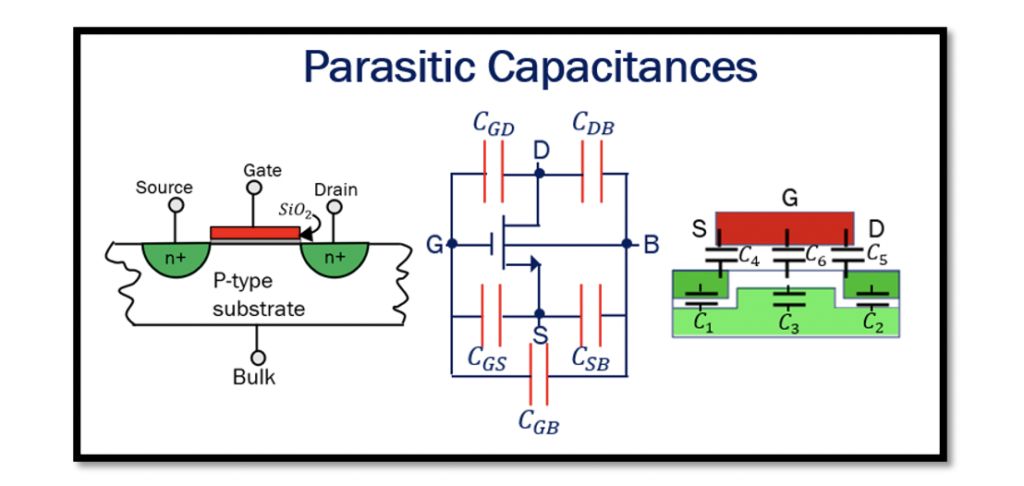MOSFET Parasitic Capacitance Effects Explained

When working with MOSFETs (Metal-Oxide-Semiconductor Field-Effect Transistors), a common issue faced by hobbyists and engineers is parasitic capacitance. Parasitic capacitance refers to unwanted capacitance between the MOSFET’s drain, gate, and source terminals. This can cause performance issues, particularly in high-speed circuits, leading to delayed switching and increased power consumption.
The problem :
In simple terms, the capacitance between the components inside a MOSFET acts like a tiny capacitor. When you switch the MOSFET on or off, this capacitance can slow down the circuit’s response time. It’s like trying to push a heavy object that resists movement due to friction—the heavier the object, the harder it is to move quickly.
The Solution :
To mitigate this effect, you can reduce switching speed, adjust gate drive strength, or use MOSFETs with lower capacitance. Another option is to add a resistor between the gate and ground to slow down the gate voltage transitions, which can reduce the capacitive effect.
Practical Example :
Imagine you’re designing a simple motor controller with a MOSFET. If the motor doesn’t respond as quickly as expected, it could be due to parasitic capacitance slowing the switching of the MOSFET. Adding a gate resistor can help speed up the response.
Sample Calculation :
If the MOSFET has a gate capacitance of 20pF, and you add a gate resistor of 100 ohms, the time constant (τ) is calculated as:
τ=R×C=100Ω×20×10−12F=2×10−9s
This gives a time constant of 2 nanoseconds, which helps reduce unwanted switching delays.
Product Suggestion :
To optimize your MOSFET designs, consider using high-quality MOSFETs and resistors, which are essential in improving circuit performance. Check out the selection of MOSFETs and resistors on SmartXProKits
.
Shop now at SmartXProKits.in and support India’s innovation—buy from our Make in India site!




















